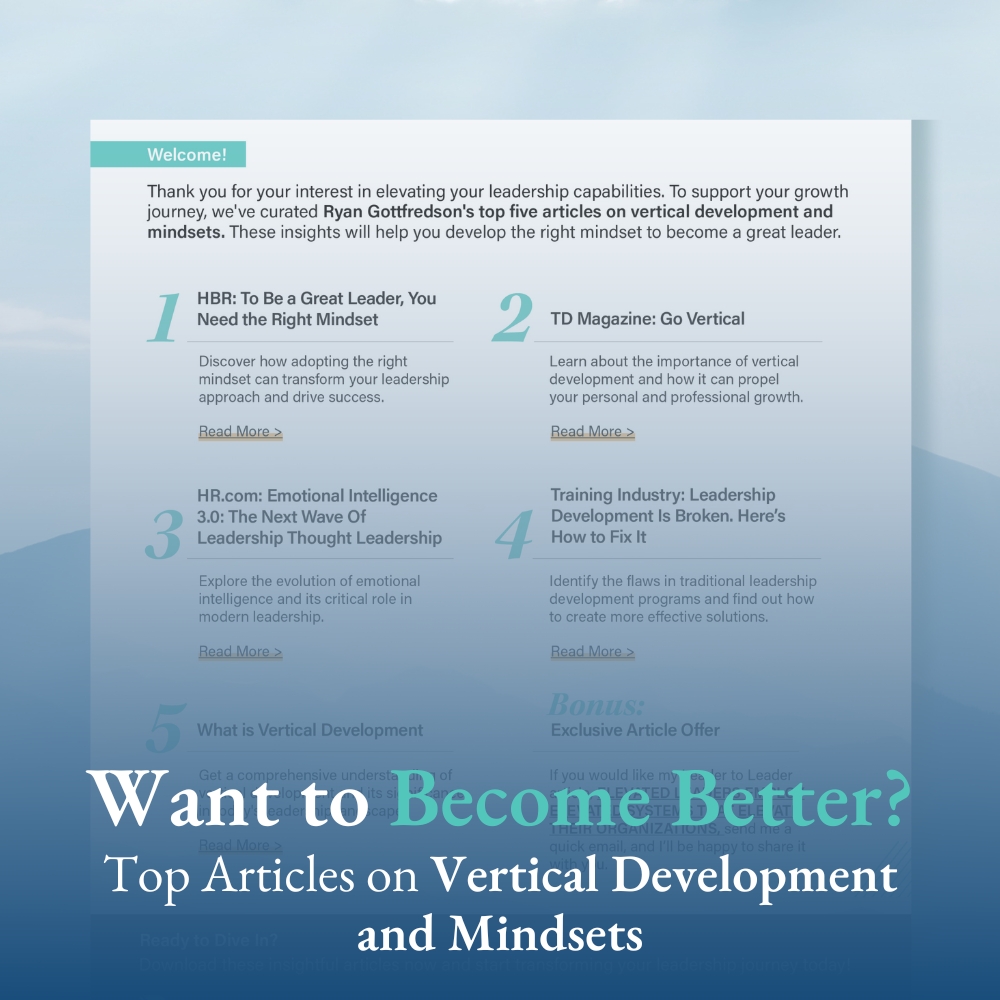My wife recently enrolled in an online parenting course focused on helping children with nutrition and eating habits.
In the course, the instructor said that:
- One of the hardest parenting tasks is helping our children learn how to eat
- One of the most difficult skills children have to learn is learning how to eat
I don’t know about you, but I didn’t learn the skill of eating as a child and was a rather picky eater. And, while I think we do a better job with our kids than my parents did with me, our children are rather picky and have a really hard time trying new foods.
As we have been trying to help our children learn how to eat better, I have seen a lot of parallels with vertical development.
Introspect for a Moment
Was there a food that you refused to eat when you are younger that you really like now? (For me, one food is beans.)
What did it take for you to shift from not liking that food to liking it?
It likely didn’t come at once. Instead, it took a process that involved:
- Putting ourselves in a context where it feels safe or even socially pressured to eat the food
- Courageously trying the food, not just once, but over and over again
It likely didn’t feel right or good to try it in the moment. But, you can probably look back on it and say that you are grateful you did it.

The Same Goes for Vertical Development
Vertical development is about upgrading our internal operating system such that we elevate how we make meaning of our world in more cognitively and emotionally sophisticated ways.
As we vertically develop, we have to courageously alter and improve how we make meaning of our world. For example, it may involve:
- Seeing failure as an opportunity to learn and grow as opposed to a signal that we aren’t good (Growth vs Fixed mindsets)
- Seeing admitting you are wrong as a way to think more optimally and find truth as opposed to a hit to your ego (Open vs Closed mindsets)
- Seeing risk as being necessary for goal attainment as opposed to something that is scary and should be avoided (Promotion vs Prevention mindsets)
- Seeing others as being just as important as ourselves as opposed to seeing ourselves as more important than others (Outward vs Inward mindsets)
When people have more negative mindsets (fixed, closed, prevention, and inward), these mindsets feel right and good. And, trying on the different mindsets will even feel wrong.
(If you want to assess the quality of your mindsets, take this free Personal Mindset Assessment)
Consider the parallel in these two sentences:
- We get so used to the food that we normally eat that we always want to eat that food (it feels good, safe, and comfortable), and we have a hard time trying foods that are new or unfamiliar to us
- We get so used to the mindset that we normally see with that we are naturally prone to see our world with our prevailing mindsets (it feels good, safe, and comfortable), and we have a hard time trying mindsets that are new and unfamiliar to us
How this Commonly Shows Up in the Leaders I Work With
Most leaders operate at Mind 2.0. They are progress makers focused on goals/outcomes. With this, they operate as “doers,” are short-term focused, and are prone to control instead of empower.
When I go into organizations and work with their leaders, I help them see the difference between the three mind levels, and invite them to step up into Mind 3.0.
(If you want to assess the vertical development level you are prone to operate at, take this free Vertical Development Assessment).
Essentially, what I am doing to inviting them to eat different foods than what they are used to. Specifically, I invite them to:
- Loosen their focus on outcomes and focus more on purpose.
- Care less about getting ahead and care more about creating value.
- Recognize that while holding on to what has worked in the past (a proven formula) feels good, safe, and comfortable, it is unlikely to lead to long-terms growth and success. Instead, we need to be more agile, which means allowing ourselves to let go of the past and grab hold of new less-proven approaches.
- Rather than try to avoid failure, create space for failure to occur.
Just like with learning how to eat, it is a process that involves:
- Putting ourselves in a context where it feels safe or even socially pressured to level up
- Courageously trying on more cognitively and emotionally sophisticated mindsets, not just once, but over and over again
The Biggest Hurdle
What developmental psychologists have learned about vertical development is that it does not come naturally as we get older. It is not a function of age. Instead it is a function of effort.
My experience working with executive teams is that most are really reluctant to engage in this effort. A big reason is because:
- Being so focused on outcomes, reaching goals, and fighting fires (Mind 2.0), they are unwilling to create the space, time, and investment for the one thing that actually will help them get where they want to go: vertical development.
It is unfortunate, but I find that most executives struggle to carve out an hour to construct a personal vertical development plan, and even fewer make the time and effort to follow up on the plan they create.
What Vertical Development Takes
In order for an organization’s leaders to vertically develop, it takes a leader, often the CEO, to:
- Level up himself or herself, and
- Create a context where it feels safe or even socially pressured to level up
If you want to vertically develop yourself or help the leaders in your organization to vertically develop, let’s chat. You can connect with me here: Connect with Ryan.









